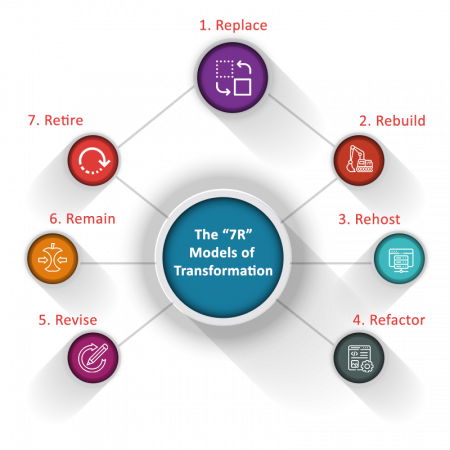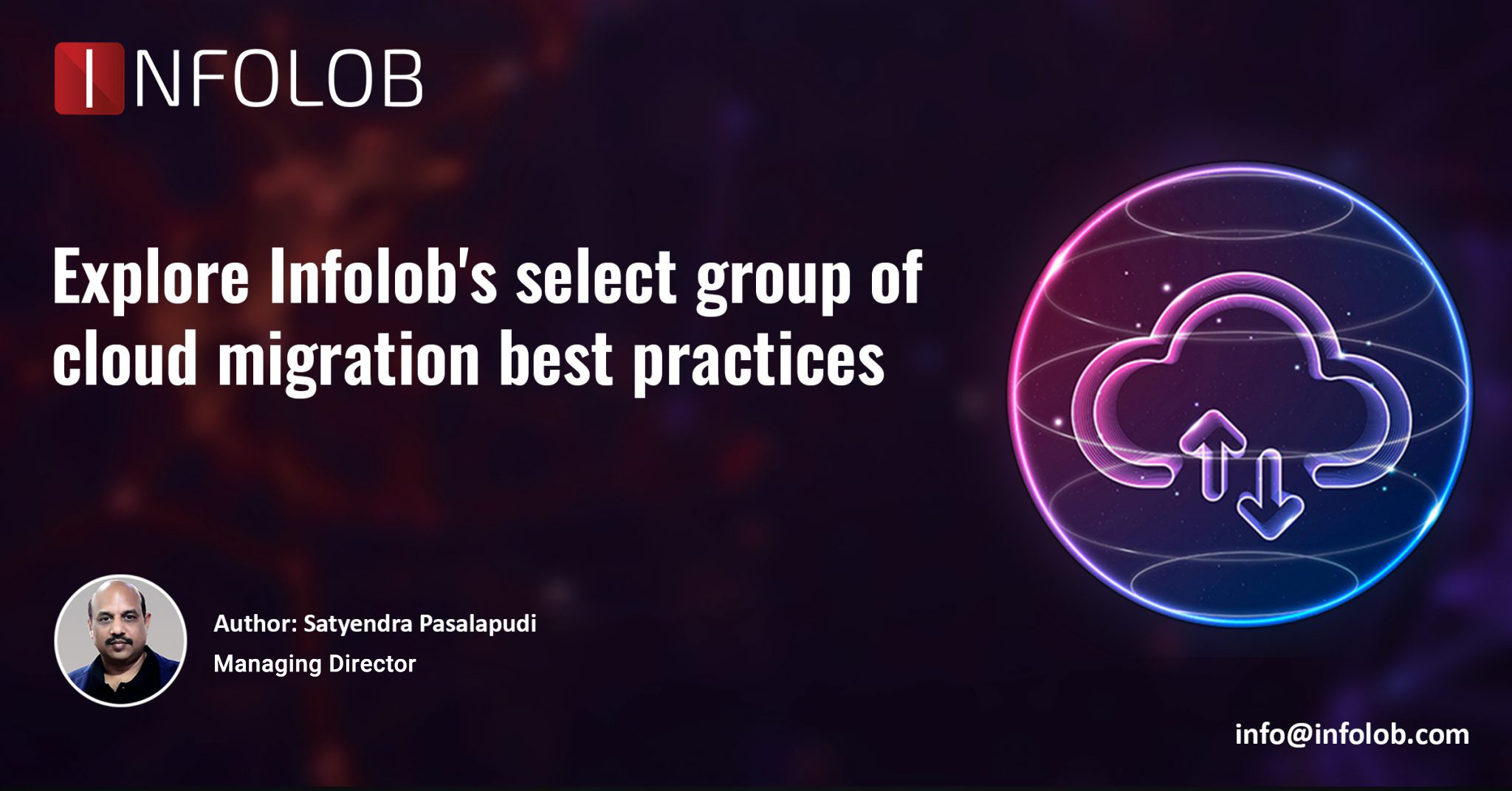With a majority of enterprises getting in on the ‘cloud modernization’ act, there are clearly more ‘hows’ than ‘whys’ popping up around it to be answered. For example – how CIOs/CTOs can navigate through the varying levels of efficiency in different cloud migration approaches? How to avoid exhausting time/effort in top-to-bottom evaluation of existing applications? Or perhaps, how to choose from the ‘7R’ models of transformation (such as rehosting, re-platforming, or refactoring) for each one of the enterprise applications? Note: The use of multiple ‘R’s for a full-fledged enterprise data estate migration to the cloud is a long-established industry best practice.
In the following, Infolob brings you the top three cloud migration approaches businesses can readily and securely utilize in 2022 to dramatically boost their cloud migration journey.

1. The Migration Factory Approach to Cloud Migration
The migration factory approach entails lateral replication and deployment of VMs/containers in bulk. This approach is highly compatible with simple applications that are also identical enough for the migration team to run it without a ton of support from individual application teams. It also gets along with initiatives that are rather infrastructure-led than application-led. Some good examples of this scenario would be a complete data center evacuation with Lift and Shift to cloud, set-up of hybrid environment with existing on-premises data center and cloud, and setting up a cloud-based disaster recovery plan.
From the figure 1 – Replace, Rebuild, Rehost, and Remain models are implemented in this approach.
The area in which the migration factory approach does not generate much yield is in the change management process – encompassing regulation and internal policy. This is the segment where every application critically requires a manual review. And because the effort to control/review unavoidable changes exceed the time gained from automating the migration of code/data itself, it loses the effect. The case is similar if your IT team needs modifications in your CI/CD toolchain prior to deploying to the cloud. The added change process furthermore trims down the advantages of an ‘as-is’ transition to the cloud.
2. The Greenfield Approach to Cloud Migration
On the other end of the migration factory approach lies the Greenfield software development. where enterprises phase out moving an application to the cloud, and rather develop a new cloud-native, ‘greenfield’ application that abides by the leading agile software development practices. It continues iteration and makes deployment in stages over a stretch of time. Although the Greenfield approach is not fully cloud-driven, the cloud-managed service providers like Infolob leveraging serverless services of the Oracle Cloud can hugely catalyze the development.
From the figure 1 – Rebuild, Refactor, and Replace models are implemented in this approach.
Under this model of cloud migration, enterprises must consider newly developed applications as products instead of projects. This translates to the IT team remaining dedicated to the application throughout the life cycle, and not dumping their work after the last milestone is reached. And as you may have figured it by now, the greenfield approach is quite distinctive from any other kind of cloud migration. For a quick rundown, there are no preset schedules or architect-imposed conditions. Alternatively, there are streaks of incrementally feature-affluent, highly functional software guided by a compact, cross-functional, and high-durability team. Note: Stakeholders must understand the dichotomy between the times taken by application development and application migration.
3. The Modernization Factory Approach to Cloud Migration
Most businesses achieve full application modernization on a one-by-one basis. Application modernization embeds a legion of opportunities to involve as many independent maneuvers as needed (coupled with the best practices) enhancing availability, scalability, security, and resilience of the application while also minimizing the effort generally required to deploy/operate the application.
Modernization factory enables organizations to truly comprehend their savings on the total cost of ownership (TCO) via incremental modernization. This is probably why upgrading the DevOps competencies of an IT team is closely linked to cloud-driven modernization. In the cloud, everything is AI/ML compatible. The result of efficient cloud adoption can be project environments consistent with provisioning and enabled by infrastructure as code (IaC). Plenty of enterprises also find great scaling advantages catered by data and logic separation. Or eliminating shell access from all servers and only authorizing the changes pushed via a CI/CD pipeline for a breakthrough.
From the figure 1 – Revise, Rebuild, and Refactor models are implemented in this approach.
Depending on the cloud service provider (especially, if it is Oracle), the common application layers in an organization’s on-premises data estate can be ‘pre-inventoried’. Oracle Cloud can also assist you in selecting from a limited list of target cloud services, particular modernization tactics, and a level of process automation. Upon the deboarding of the application in production in the cloud, more additional modernization efforts can be brought in.
Conclusion
Long story short, if you are planning on creating the most ideal cloud migration plan, please make note of the following:
- Wireframing a successful migration strategy hinges on a deep understanding of your business/IT needs
- For instance, if it is about reducing cost with minimal yet impactful changes to your applications – go for the migration factory approach
- If you wish to amplify your software’s advantages with strategic enhancements, Infolob suggests the greenfield software development and the modernization factory approach
- If you are looking to innovate with new transformational business challenge-addressing applications, Infolob recommends the greenfield software development approach
For expert assistance in cloud migration, explore our free cloud assessment offering or write to us now at: [email protected]

